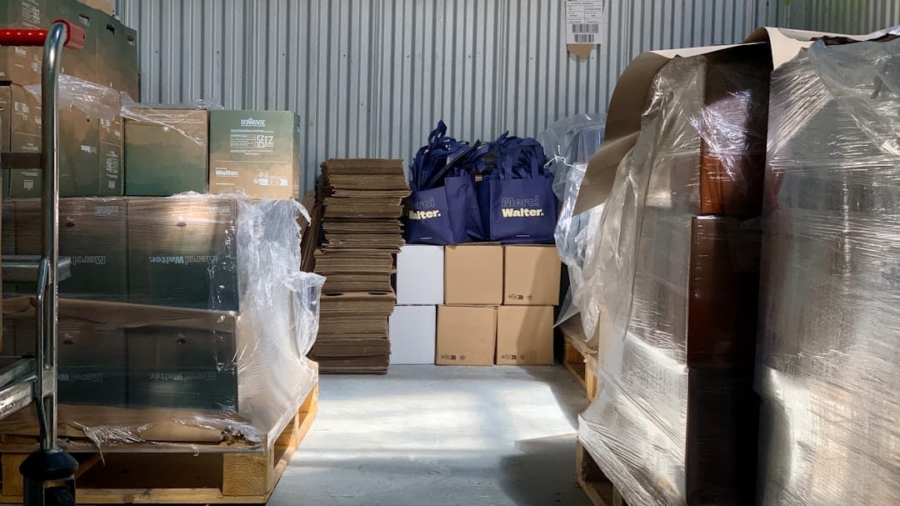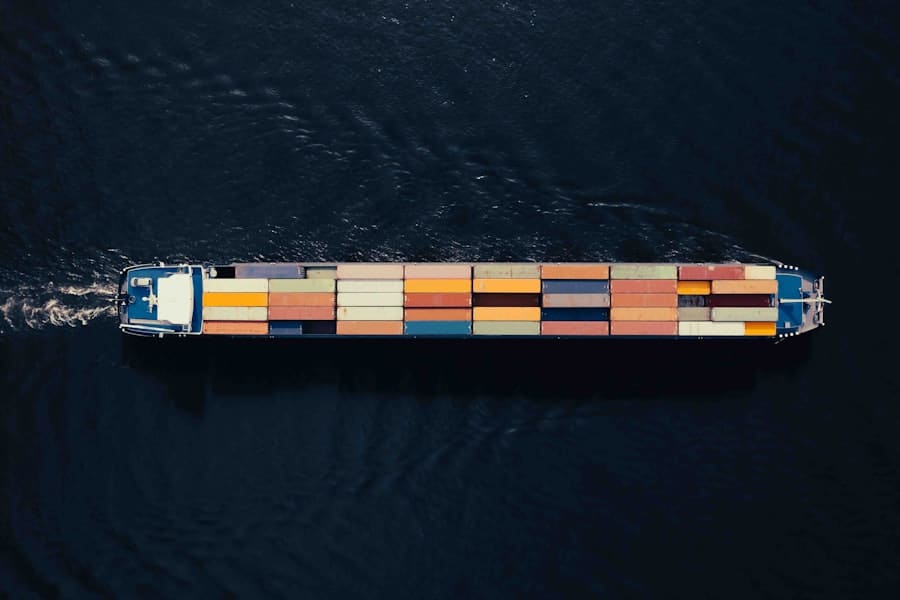The advent of 5G technology marks a significant leap in telecommunications, promising to revolutionize how we connect, communicate, and interact with the world around us. Unlike its predecessors, 5G offers unprecedented data transfer speeds, reduced latency, and the ability to connect a vast number of devices simultaneously. This next-generation network is not merely an enhancement of 4G; it represents a paradigm shift that enables a plethora of applications across various sectors, including healthcare, transportation, and, notably, emergency management.
The capabilities of 5G are particularly crucial in scenarios where timely information and rapid response are paramount, such as during natural disasters or humanitarian crises. As the world becomes increasingly interconnected, the implications of 5G extend far beyond consumer convenience. The technology’s potential to facilitate real-time data exchange and enhance operational efficiency is particularly relevant in logistics, especially in emergency aid situations.
In these high-stakes environments, the ability to quickly mobilize resources and coordinate efforts can mean the difference between life and death. By harnessing the power of 5G, organizations involved in emergency response can significantly improve their logistics operations, ensuring that aid reaches those in need as swiftly and effectively as possible.
Key Takeaways
- 5G technology is the next generation of mobile internet connectivity, offering faster speeds and more reliable connections.
- Logistics plays a crucial role in emergency aid, ensuring timely and efficient delivery of essential supplies to affected areas.
- 5G technology enhances logistics for emergency aid by enabling real-time tracking and monitoring of shipments and vehicles.
- Improved communication and coordination are key benefits of 5G technology in emergency aid logistics, allowing for better response and resource allocation.
- Automation and robotics, as well as the integration of drones and autonomous vehicles, are revolutionizing the efficiency of logistics in emergency aid operations.
Importance of Logistics in Emergency Aid
Logistics plays a critical role in emergency aid, serving as the backbone of any effective response strategy. When disasters strike—be it earthquakes, floods, or pandemics—the immediate challenge is not just to provide assistance but to do so in a manner that is organized and efficient. The logistics of emergency aid encompasses a wide range of activities, including the procurement of supplies, transportation of goods, distribution to affected areas, and coordination among various stakeholders such as government agencies, non-governmental organizations (NGOs), and local communities.
Each of these components must work seamlessly together to ensure that aid is delivered promptly and effectively.
For instance, during the aftermath of Hurricane Katrina in 2005, logistical challenges severely hampered relief efforts.
Roads were impassable, communication systems were down, and there was a lack of coordination among different agencies. Such scenarios highlight the necessity for robust logistics frameworks that can adapt to rapidly changing conditions. Effective logistics not only ensures that supplies reach those in need but also helps maintain order and instills confidence among affected populations.
How 5G Technology Enhances Logistics for Emergency Aid
The integration of 5G technology into emergency aid logistics offers transformative benefits that can significantly enhance operational efficiency. One of the most notable advantages is the ability to transmit large volumes of data at lightning-fast speeds. This capability allows for real-time updates on resource availability, inventory levels, and the status of transportation routes.
For example, organizations can utilize 5G-enabled devices to monitor stock levels at warehouses and distribution centers continuously. This data can then be analyzed to optimize supply chains and ensure that critical resources are dispatched where they are needed most. Moreover, the low latency characteristic of 5G networks facilitates instantaneous communication between various stakeholders involved in emergency response efforts.
This means that decisions can be made more quickly based on accurate and up-to-date information. In scenarios where every second counts—such as coordinating medical assistance or deploying search-and-rescue teams—this rapid communication can be invaluable. The ability to share information seamlessly across different platforms and devices enhances collaboration among agencies and organizations, leading to a more unified response effort.
Real-time Tracking and Monitoring
One of the standout features of 5G technology is its capacity for real-time tracking and monitoring of assets and personnel involved in emergency aid logistics. With the implementation of Internet of Things (IoT) devices connected through 5G networks, organizations can gain unprecedented visibility into their operations. For instance, GPS-enabled sensors can be attached to vehicles transporting supplies, allowing logistics managers to track their movements in real time.
This capability not only helps ensure that aid reaches its destination but also allows for dynamic route adjustments based on traffic conditions or road closures due to disaster impacts. Additionally, real-time monitoring extends beyond just vehicles; it encompasses the entire supply chain. For example, temperature-sensitive medical supplies such as vaccines can be monitored throughout their journey from storage facilities to distribution points.
If a temperature anomaly is detected during transport, immediate corrective actions can be taken to prevent spoilage. This level of oversight is crucial in maintaining the integrity of aid supplies and ensuring that they are delivered in optimal condition.
Improved Communication and Coordination
Effective communication is a cornerstone of successful emergency response efforts. The enhanced connectivity provided by 5G technology allows for improved communication channels among all parties involved in logistics operations. Traditional communication methods often suffer from delays or interruptions during crises; however, 5G networks are designed to support high-capacity data transmission even in challenging environments.
This means that first responders can communicate with command centers without experiencing lag or dropped connections. Furthermore, 5G facilitates the integration of various communication tools into a cohesive system. For instance, video conferencing applications can be utilized for remote coordination meetings among stakeholders who may be geographically dispersed.
This capability allows for real-time strategy discussions and decision-making processes that are essential during emergencies. By fostering better communication and coordination among agencies—whether governmental or non-governmental—5G technology helps create a more synchronized response effort that can adapt quickly to evolving situations on the ground.
Automation and Robotics in Logistics
The role of automation and robotics in logistics is becoming increasingly prominent, particularly in emergency aid scenarios where human resources may be limited or stretched thin. With the advent of 5G technology, the deployment of automated systems becomes more feasible and effective. For example, autonomous vehicles can be utilized for transporting supplies to remote or hard-to-reach areas without requiring constant human oversight.
These vehicles can navigate complex environments using real-time data provided by 5G networks, ensuring that they can adapt to changing conditions on the ground. In addition to transportation, robotics can play a vital role in warehouse operations during emergencies. Automated systems can assist with sorting and packing supplies more efficiently than manual labor alone.
This not only speeds up the logistics process but also reduces the risk of human error during high-pressure situations. Moreover, drones equipped with 5G connectivity can be deployed for various tasks such as delivering medical supplies or conducting aerial surveys to assess damage in affected areas. The combination of automation and robotics with 5G technology creates a powerful synergy that enhances overall operational efficiency in emergency aid logistics.
Integration of Drones and Autonomous Vehicles
The integration of drones and autonomous vehicles into emergency aid logistics represents a groundbreaking advancement made possible by 5G technology. Drones have already proven their worth in various applications—from delivering medical supplies to conducting search-and-rescue missions—thanks to their ability to access areas that may be difficult or dangerous for human responders to reach. With 5G’s high-speed connectivity, drones can transmit high-definition video feeds back to command centers in real time, providing critical situational awareness that informs decision-making processes.
Autonomous vehicles complement this capability by offering reliable ground transportation solutions for delivering larger quantities of supplies over longer distances. These vehicles can operate independently while being monitored through 5G networks, allowing logistics managers to track their progress and make adjustments as necessary. For instance, if a road becomes impassable due to flooding or debris, an autonomous vehicle can reroute itself based on real-time traffic data received via the 5G network.
This level of adaptability ensures that aid reaches those in need without unnecessary delays.
Future Implications and Challenges of 5G in Emergency Aid Logistics
While the potential benefits of integrating 5G technology into emergency aid logistics are substantial, several challenges must be addressed to fully realize its capabilities. One significant concern is the need for robust infrastructure capable of supporting widespread 5G deployment in disaster-prone areas. Many regions may lack the necessary telecommunications infrastructure to facilitate effective 5G connectivity during emergencies when it is needed most.
Ensuring that these networks are resilient against natural disasters will require significant investment and planning. Additionally, cybersecurity poses another challenge as reliance on digital systems increases with the adoption of 5G technology. The interconnected nature of logistics operations means that vulnerabilities could be exploited by malicious actors seeking to disrupt emergency response efforts.
Organizations must prioritize cybersecurity measures to protect sensitive data and maintain operational integrity during crises. Despite these challenges, the future implications of 5G technology in emergency aid logistics are promising. As advancements continue to unfold, we may witness even more innovative applications that enhance response capabilities and improve outcomes for affected populations worldwide.
The synergy between cutting-edge technology and humanitarian efforts has the potential to redefine how we approach disaster response in an increasingly complex global landscape.
In a recent article on how to choose the right iPhone for you in 2023, the importance of selecting the right technology for specific needs is highlighted. This concept is also crucial in the logistics industry, especially when it comes to emergency aid delivery. The Role of 5G in Enhancing Logistics for Emergency Aid discusses how the latest technology, such as 5G networks, can significantly improve the efficiency and effectiveness of emergency response efforts. By choosing the right tools and devices, organizations can streamline their operations and provide faster assistance to those in need.
FAQs
What is 5G technology?
5G is the fifth generation of wireless technology that promises faster speeds, lower latency, and the ability to connect more devices at once.
How does 5G enhance logistics for emergency aid?
5G technology enables real-time tracking of emergency aid shipments, improves communication between responders, and allows for the use of advanced technologies such as drones and robotics in emergency response efforts.
What are the benefits of using 5G in emergency aid logistics?
Some benefits of using 5G in emergency aid logistics include faster response times, improved coordination between aid organizations, and the ability to deploy advanced technologies for more efficient aid delivery.
How does 5G improve communication in emergency response efforts?
5G technology provides faster and more reliable communication, allowing for seamless coordination between emergency responders, aid organizations, and government agencies during a crisis.
What role do drones and robotics play in emergency aid logistics with 5G?
With 5G technology, drones and robotics can be used to deliver aid to hard-to-reach areas, assess damage in disaster zones, and provide real-time data to aid organizations, improving the overall efficiency of emergency response efforts.



